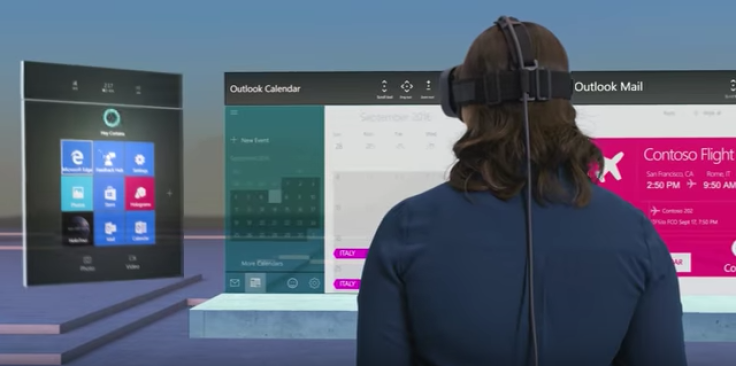Microsoft says hologram is coming to Windows 10 PC in 2017

Windows 10 PC users will start experiencing the holographic version of Windows apps from their computers next year with the release of an upcoming update that runs parallel to head-mounted displays.
Microsoft Windows and Devices group executive vice president Terry Myerson announced Tuesday that a Windows 10 upgrade set for release next year will enable PCs to run Windows Holographic Shell, which is the tech company’s new single platform for virtual reality, augmented reality and mixed reality.
“Next year, we will be releasing an update to Windows 10, which will enable mainstream PCs to run the Windows Holographic shell and associated mixed reality and universal Windows applications,” Myerson said in a blog post.
Using Microsoft HoloLens or any head-mounted display (HDM), PC users can access a three-dimensional version of the Windows 10 operating system.
“The Windows Holographic shell enables an entirely new experience for multi-tasking in mixed reality, blending 2D and 3D apps at the same time, while supporting a broad range of 6 degrees of freedom devices,” Myerson pointed out.
Myerson unveiled a video demonstration of Windows Holographic Shell during Intel’s Developer Forum in San Francisco. In the video, the user can access a virtual workspace, play with a virtual pet, interact with 3D maps, multitask on mixed reality, and even teleport overseas.
Windows Holographic experience available for mainstream #Windows10 PCs next year: https://t.co/zZLapEkYishttps://t.co/mz7lGNk5hK
— Windows (@Windows) August 16, 2016
Microsoft-Intel partnership
Aside from this Windows 10 update, Myerson also announced the collaboration between Microsoft and Intel over the production of mixed-reality-ready PCs and HDMs.
“Our shared goal is to enable our hardware partners to build a broad range of devices for the mainstream consumer and business markets.
“We are working with several partners on the spec today, and plan to publicly release v1 of the spec at the Windows Hardware Engineering Community (WinHEC) conference in Shenzhen in December.”
To recall, Microsoft started charging users for Windows 10 upgrade on July 29 after giving the public a year to download the upgrade for free.
WATCH: Microsoft introduces Windows Holographic Shell






